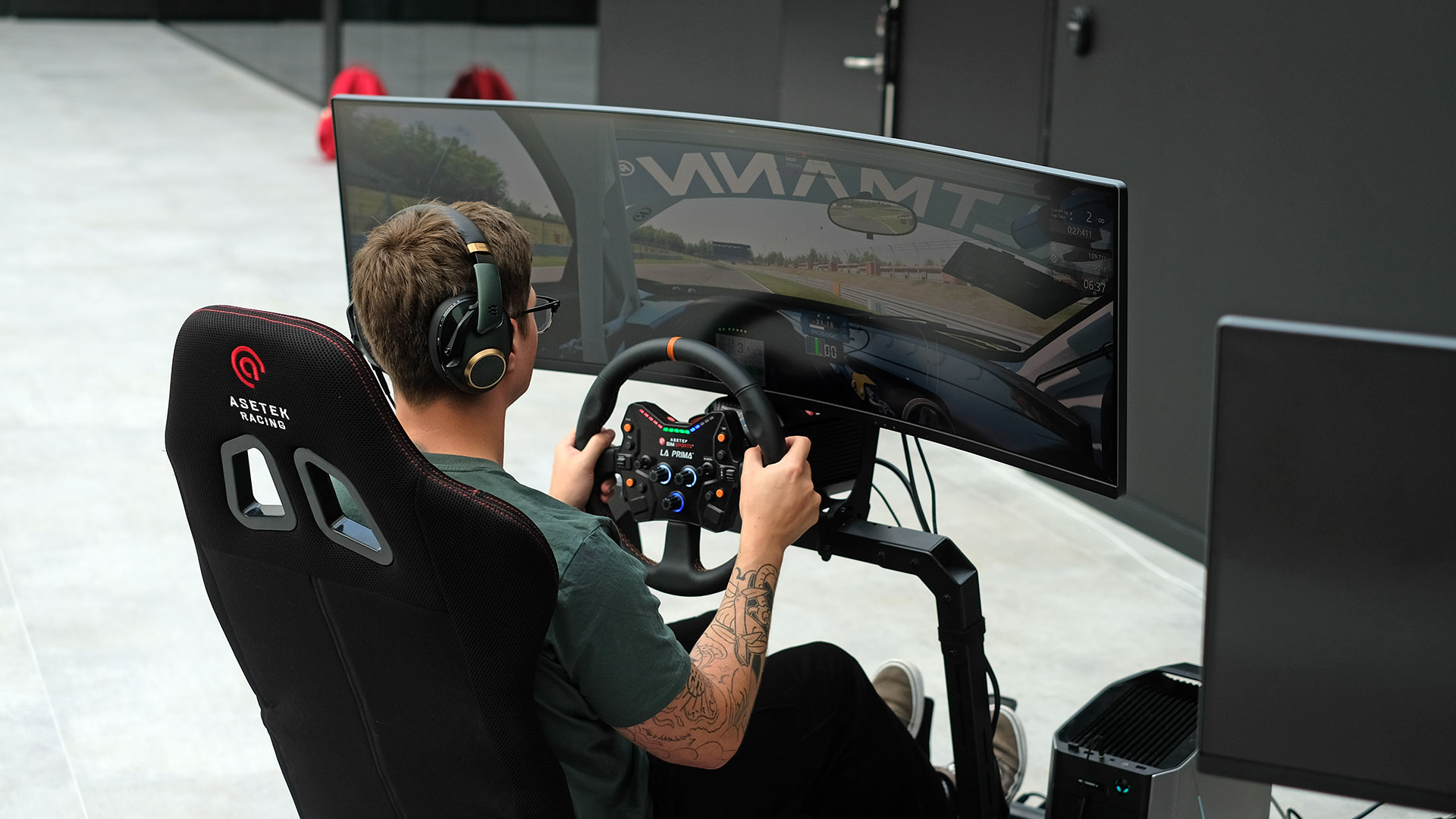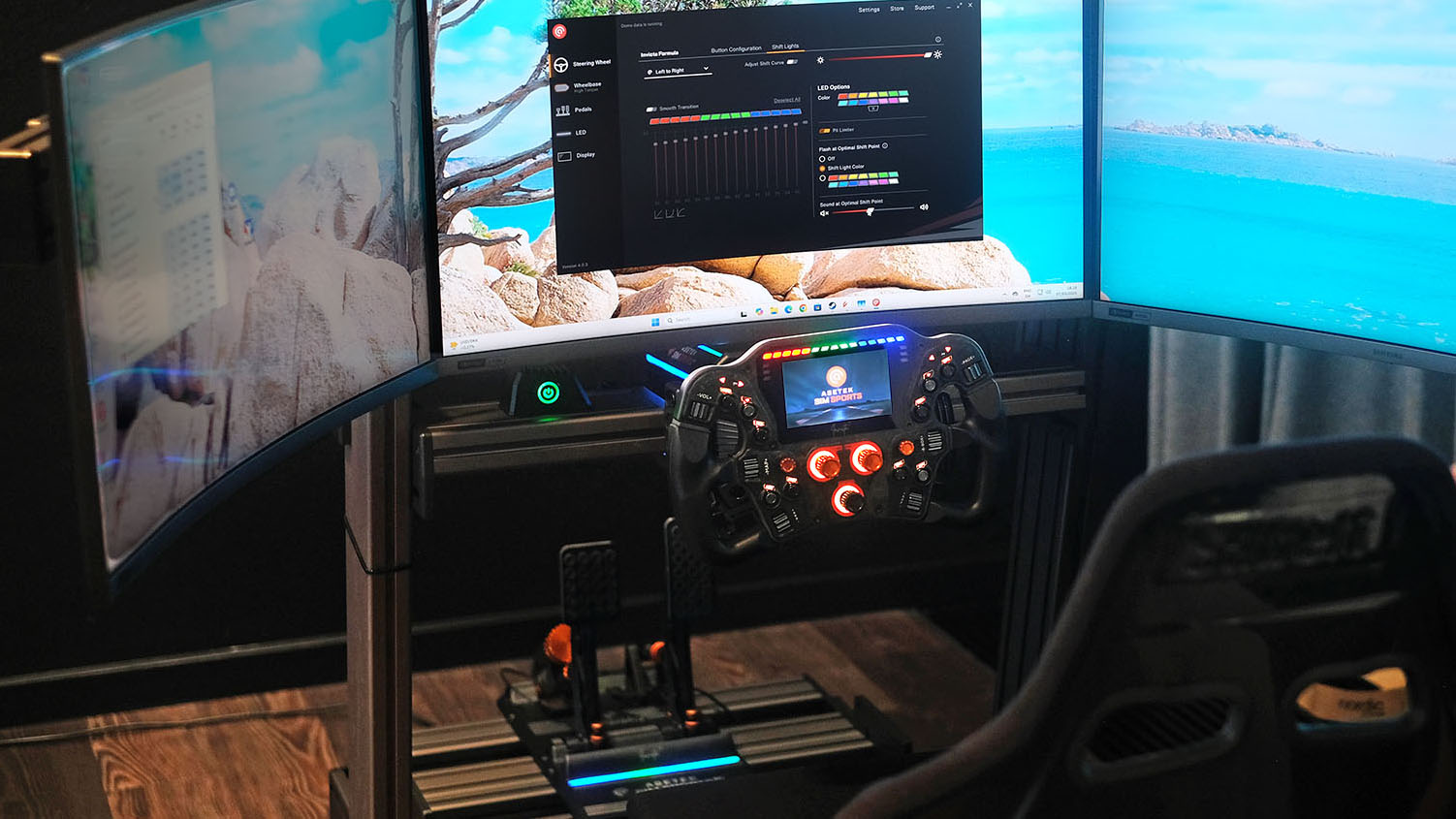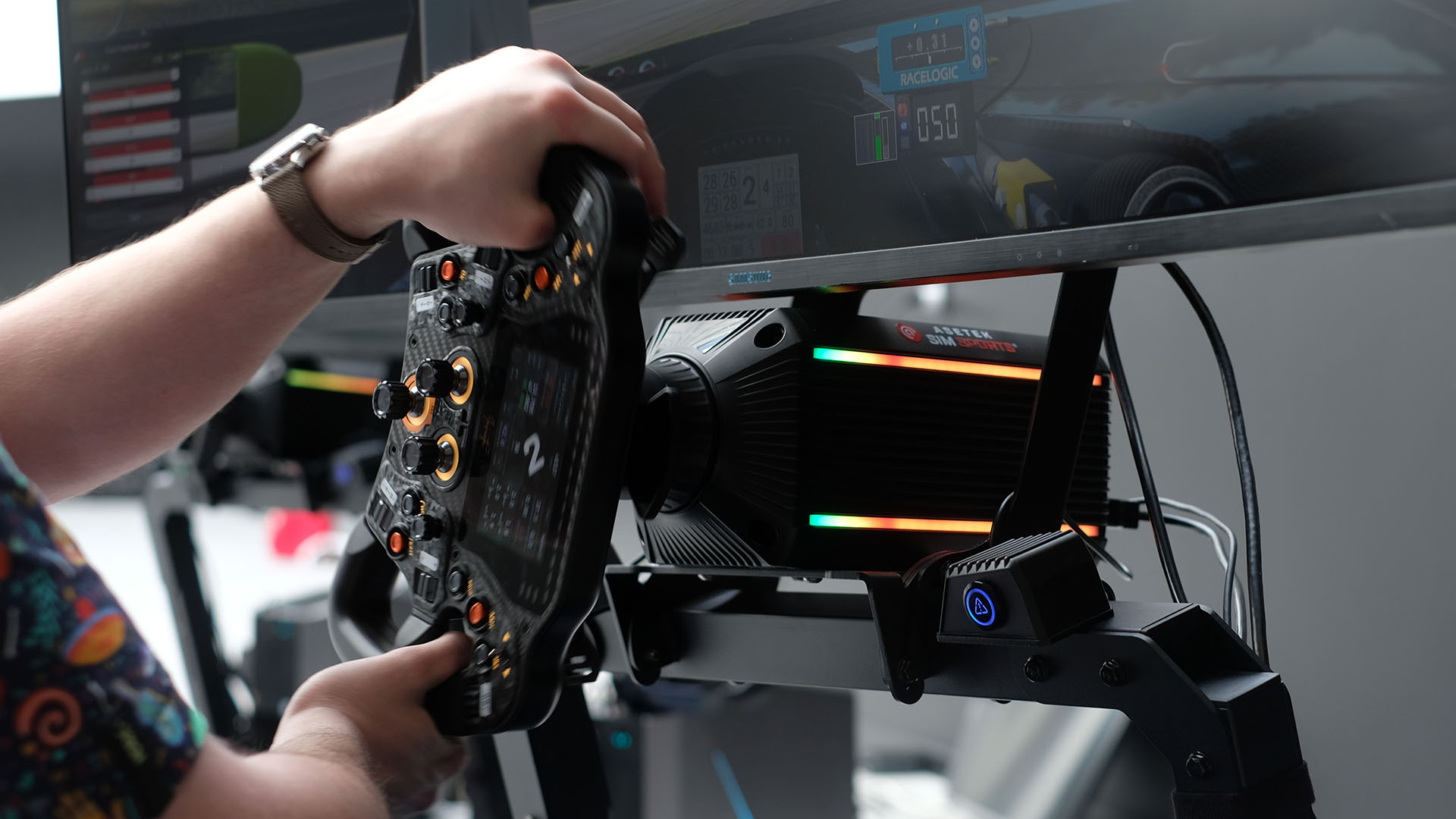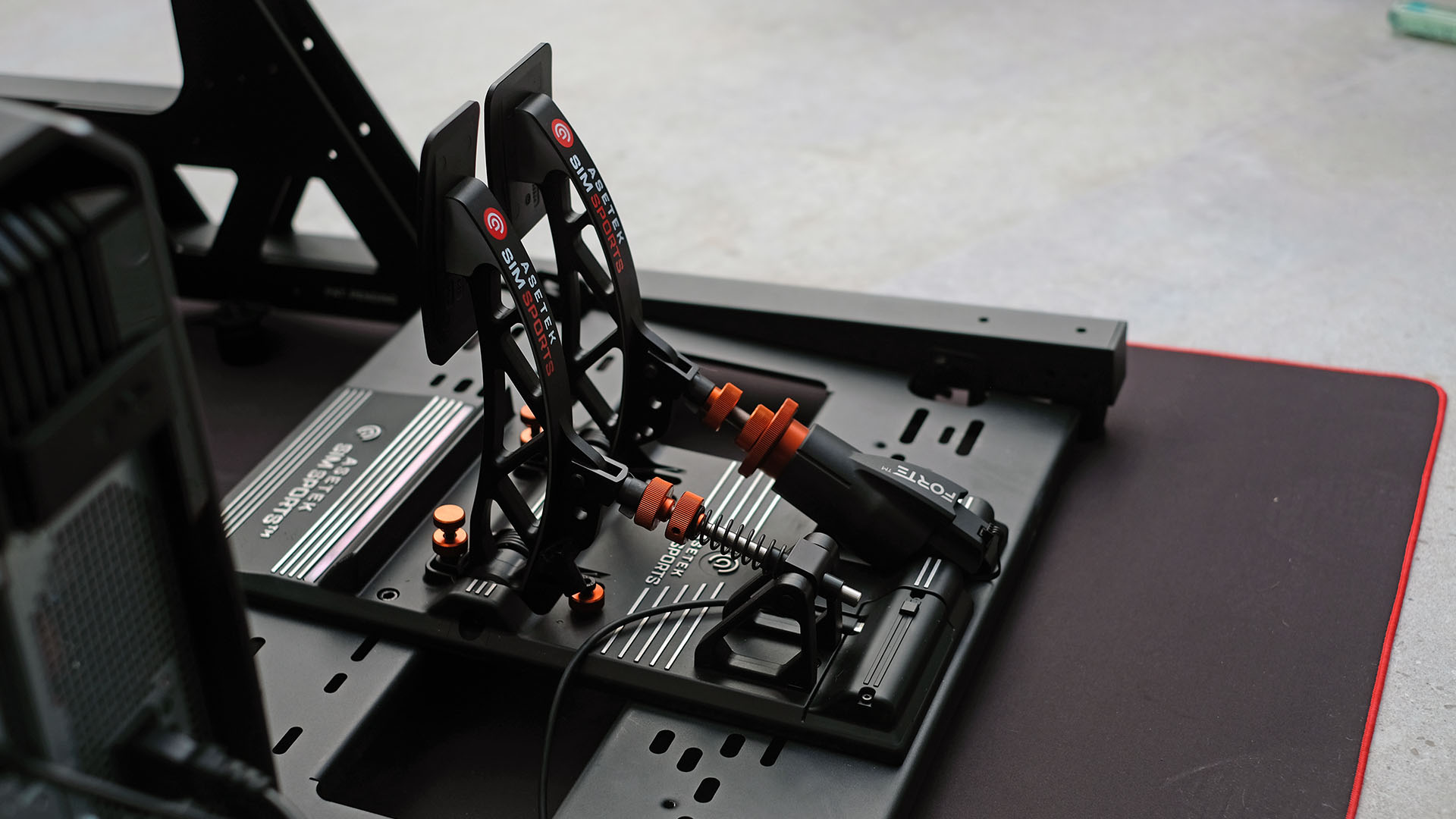Love sim racing? How Asetek is looking to win the racing wheel market
We sit down with Asetek's CEO to learn the story behind the company's PC cooling roots and affordable sim wheel aspirations



Heard of Asetek? You’re not alone if the answer is “no.” But there’s also a decent chance you own one of its products if you have a desktop gaming PC.
Asetek came up with the “all in one” liquid cooler concept, and patented the idea 20 years ago. A big proportion of those coolers made to date are – yep – made by Asetek.
Why should you care? The Asetek name is about to crash headfirst into the mainstream with an affordable sim racing wheel for driving games that works on Xbox consoles as well as PC, potentially among other platforms.
How does a maker of, let’s be honest, boring PC components get into the world of racing wheels? It’s a story that involves real-world race driving careers, borderline pathological risk-taking, and a tech CEO a little different to any I’ve met before.
Meet the boss
For one, despite being a publicly traded company, Asetek’s CEO is still the quasi mad scientist engineer who came up with the AIO cooler in the first place, André Eriksen.

“The reason why this moment is special is because in the 30 year history of the company, we have actually almost never sold anything under our own brand,” says Eriksen.
“We are most known for liquid cooling, for gamers, and our big customers are Asus, Alienware, HP, and these kinds of companies.”
Get all the latest news, reviews, deals and buying guides on gorgeous tech, home and active products from the T3 experts
Asetek started making racing gear under its own name in 2021, but relatively few have used – or even seen – that stuff to date.
Until now, Asetek racing products have been made for the high-end crowd only. We’re talking about folks willing to spend up to £625 ($850) on pedals, up to £1300 ($1700) on a wheel base, and hundreds more on the actual round thing you stick on it.
I’ve reviewed racing wheels for well over a decade, but never touched an Asetek one – until I set foot in the company’s Denmark HQ.
Conquer the high-end
“If you look back to our liquid cooling, we started in the high end, then we moved down. That's exactly the same thing we have done now,” says Eriksen, referencing the affordable wheel coming in just a few months that he says will land “a little bit above Logitech” in terms of pricing.

I've tried that wheel. But I can’t tell you much more about it yet – as the details aren’t final. But it could end up being something pretty special.
This plan only really starts to make sense when you hear a bit about Eriksen’s history. And get the gist this is no classic boardroom-dwelling C-suite type.
For starters, the Asetek head office in northern Denmark is a 50 million Euro Bond lair, and when we stepped through its doors, I found a Formula 3 Ligier JS P320 sat right there in the palatial foyer. That’s a car worth as much as £200,000.
“Sometimes you just need to think out of the box. And sorry, my friends, have the balls to do something different,” says Eriksen, who clearly has just the right screw loose.
Real track to virtual track
The CEO was also a hobbyist racer for years, starting as many do behind the wheel of a go-kart.

“He started go karting, and then that got a bit too boring... he jumped into the equivalent of a Formula 3 car, after doing only karting. He skipped Formula 4, went head on into it,” his son Valdemar Eriksen told me.
Formula 3 cars can approach 200mph, and have supercar-style 0-60mph acceleration.
“That went about as you would expect for his age. But then he actually, eventually got really good at it,” concludes Valdemar.
As well as being on hand to demo Asetek’s £3000-a-set Invicta kit, Valdemar was a professional racing driver, and no doubt part of the catalyst for Asetek’s move into sim racing.
He only quit last year because the family ran out of money to help fund his career, during which he won Spanish and Danish F4 races, the latter three times.
“We stopped my son's racing career a little bit more than a year ago because we just didn't have the required money,” says Eriksen. That’s right, even a successful tech CEO can’t afford to mould the next Verstappen or Norris.
Time behind the wheel
That sort of background does help you to design a sim racing rig and was, predictably, the Eriksens’ way in.

“[Sim racing] was really preparation for real racing,” Eriksen says. “Valdemar did a race in India, for example, and we didn't have the money to go and test there, so I got a laser-scanned version of the racetrack down there, Chennai International Raceway, and then we used that, and then Valdemar could use it for his sim.”
But his key moment of inspiration for actually getting involved in the making of sim racing gear was finding the experience of owning and running five £3000 sim racing rigs was, well, a bit crap.
“At no point in time, for 2 years, were all five of them running simultaneously,” says Eriksen. “And then on top, the customer service was just lousy.”
He decided Asetek could do better.
What makes a killer racing wheel anyway?
The most interesting of Eriksen’s insights were about what actually makes a good sim racing wheel, though. And while I’ve reviewed countless racing wheels at this point, we don’t intersect at all here – mostly because my “hot laps” are as hot as last night’s leftover pizza.
I’ll sit behind a racing wheel for the immersion of the force feedback, the sheer fun of it. But to the pros? That’s not really the point.

“The absolutely most important thing in a sim racing rig is your brake pedal. That's where all the time is,” says Eriksen. “You could use a dish for a wheel. It will not make you fast or slow.”
Asetek is known, even infamous in some circles, for its super-hard brake pedals.
“The brake pedals we have made, I mean, they are like those in a real race car,” he says, having of course actually driven them.
Asetek’s top-end Invicta pedals will feel bizarre if you’re accustomed to the brake of a Logitech G29, a Thrustmater T-series, or that of a cheerfully corroded Suzuki Swift, because the pedal itself barely moves at all.
“It's simply because you have a very sensitive muscle memory. Your brain can make your foot press with the same amount of pressure in an accuracy you won't imagine. Whereas, if it was soft, your brain would have to remember a position. It's impossible.”

“The wheelbase – that's really for the fun of it, the more realistic it feels, the more fun it is. But if you're there to win races, it's the pedal,” he says.
A high-end brake Invicta pedal was Asetek’s first racing product, back in 2021. It started this whole endeavour.
This is, of course, a bright sign for the future of affordable racing wheel kits too. Because you know what often sucks in the lower-end sets? Pedals.
T3 will be back with more on Asetek’s upcoming console-friendly racing wheel as soon as the final details in.

Andrew is a freelance tech and entertainment journalist. He writes for T3, Wired, Forbes, The Guardian, The Standard, TrustedReviews and Shortlist, among others.
Laptop and computing content is his specialism at T3, but he also regularly covers fitness tech, audio and mobile devices.
He began writing about tech full time in 2008, back when the Nintendo Wii was riding high and smartphones were still new.
You must confirm your public display name before commenting
Please logout and then login again, you will then be prompted to enter your display name.